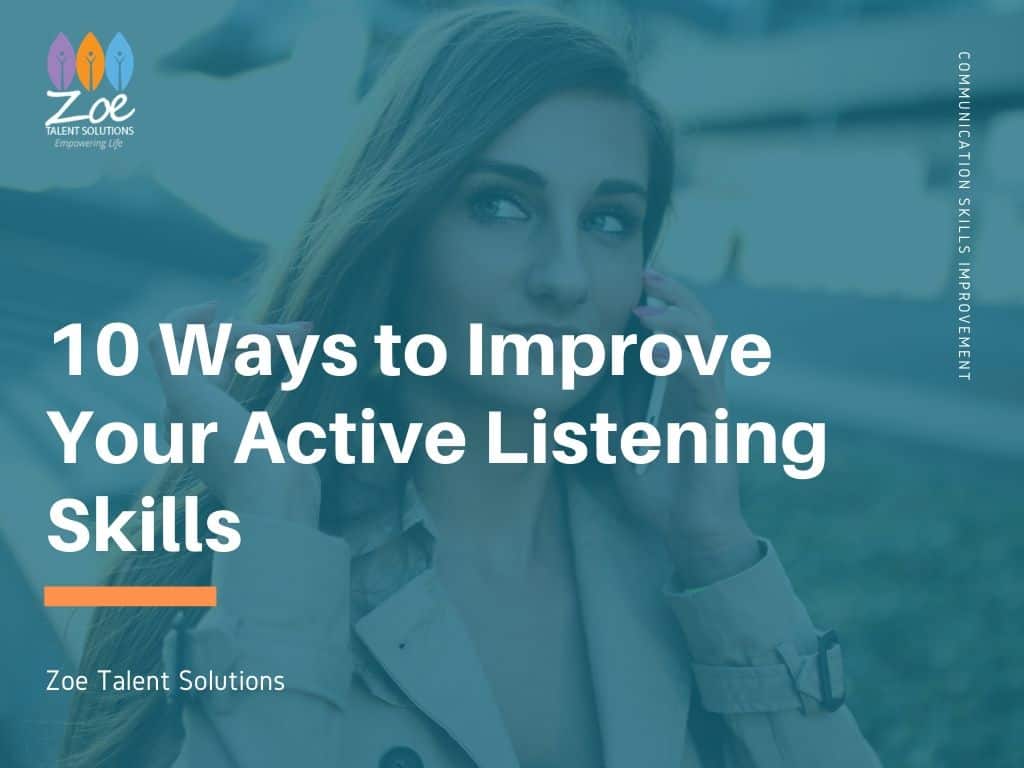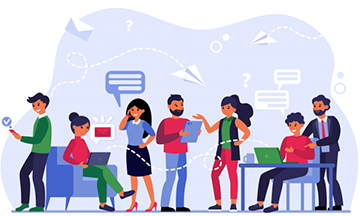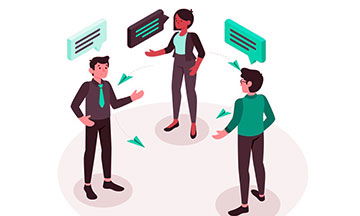Listening traditionally was viewed as a passive activity which involved simply hearing the person, and responding when they finish. However, the effective way is to engage in inactive listening which requires frequent interruptions and asking questions.
The active listener is careful to show eye contact and interest in what the speaker is saying to ensure their full cooperation. The speaker needs to understand that the listener is actively interested in what they are saying is through a mixture of verbal and nonverbal cues.
The nonverbal cues may include nodding of the head, maintaining eye contact, an interested expression or more. The provision of active feedback in the form of questions will encourage the speaker to be more comfortable and aid to the listener’s full cooperation.
Active listening skills brings improvement in all aspects of life and is not only limited to the workplace. However, active listening cannot be developed overnight, rather need to be nourished on daily basis at every opportunity to listen.
Once you get the hang of the active listening skills you will find yourself a better conversationalist, which will bring improvement to all relationships within the workplace and personal relationships too.
Here are ten ways to improve your active listening skills:
1. Devote Your Attention Solely to the Speaker
Our attention span has decreased over time and now it is increasingly difficult to concentrate on one task only. This is only made tougher by the presence of mobile ringing, flashing notifications and others talking.
Apart from the external distractions it’s also important to clear your mind of their thoughts to be able to clearly digest their information being told.
When talking clear away your electronics or at least turn away from them, turn over any papers on your desk so that your eyes don’t wander off in their direction.
2. Focus on Body Language
It is also important to work on your body language and show the speaker that you are interested in what they say.
The chances are that as they see the interested listener they will be more confident in how they speak which would in turn help you understand the message they wish to convey.
Gestures such as nodding the head, refraining from a slouched posture and arranging the facial expression will all get the job done.
3. Make Sure You Provide Feedback
Where ever possible instant feedback should be provided to the speaker which would ensure that the message has been decoded by the listener.
This also gives an opportunity to the speaker to clarify anything which may have been misunderstood by the listener.
Paraphrasing is the correct technique to correlate what you have understood with the speaker using phrases such as “This is what I understand….” And “what do you mean regarding point…”
Try and remove the hesitation in providing feedback as it is much easier to simply say nod and say yes you understand but the reality may be far from different.
4. Keep the Judgment at Bay
This is a hard one which many struggle with but the positive effects of utilizing this point are quite rewarding.
Mentally as we listen to someone we is secretly judging what they are saying not allowing the mind to remain a clean slate.
Interrupting the speaker and not allowing them a full chance to complete what they are saying is counterproductive. A clean slate will allow you to receive the words with betters
5. Use Eye Contact
When you maintain eye contact with the speaker the chances of distracting thoughts dramatically reduce. However, it is also important to maintain eye contact to the point that you’re comfortable otherwise, the awkwardness will catch on.
6. Hold on to Your Similar Experience Unless Asked for
The speaker may be talking about something you yourself have experienced but the best thing to do would be to hold back on your similar experience until they ask for it.
The speaker may simply need to vent their experience or you may miss out on the minor details if you interrupt them in the beginning.
7. Emotionally Invest in What the Speaker is Saying
Simply listening and questioning the speaker won’t get you the understanding you wish for, rather emotionally invest in what they are saying.
Feel the grief, or joy in what they say, to be able to feel so, place yourself in their shoes and wonder how they would be feeling right now. This may sound easy but in reality it requires a lot of time and practice but is a achievable goal.
This is one skill which separates the best listeners from the good listeners and is considered the hardest to master of them all.
8. Let them Finish!
Quite often the listeners confuse the advice of asking questions with interrupting them in the middle of what they have to say.
It is important to let them finish or pause and that is your cue to ask the questions that will provide you with clarification of what they had to say.
You will find that once you let them finish, the questions you had may already be answered in the space of the time you let them finish. Thus, allow the speaker their moment and let them finish talking.
9. Summarize their Words
Summarizing what the speaker had to say can be one-trick which instantly brings you results in your listening skills.
A summary of will ensure that you understood what they said, give them a chance to clarify any points which were misunderstood and add more to what had already been spoken about.
10. Think back on the conversation
The norm is to have a conversation and then forget about it completely. However, the key is to reflect on what has been said and what actions need to be taken after the conversation to ensure productivity.
This step of reflections allows the listener to digest the details and then they can always email back if they have any more questions.
Do you want to Study an Active Listening Skills Training Course?
Zoe Talent Solutions offers highly professional an active listening skills training course to bloom your career in communication and writing skills.
See Zoe Talent Solutions full communication and writing skills course list here: Communication and Writing Training Courses











![Saudi Oil Industry Key Stats Unveiled [2024] 14 Saudi Oil Industry Key Stats](https://zoets.b-cdn.net/wp-content/uploads/2024/02/h.jpg)






